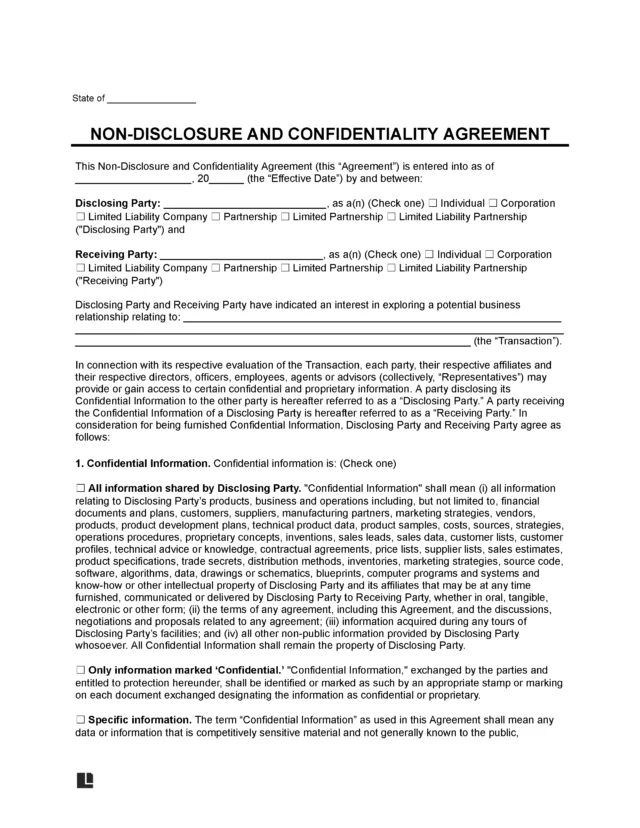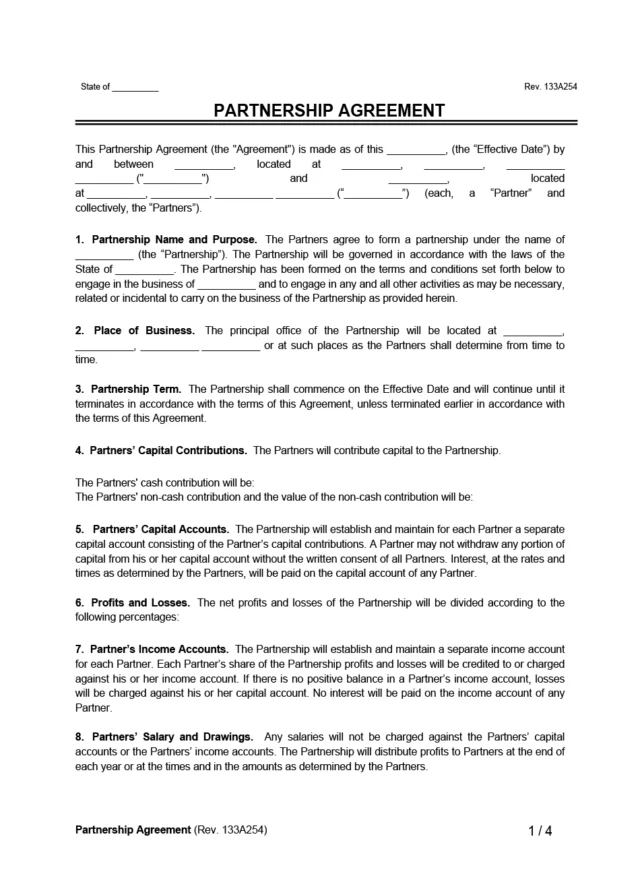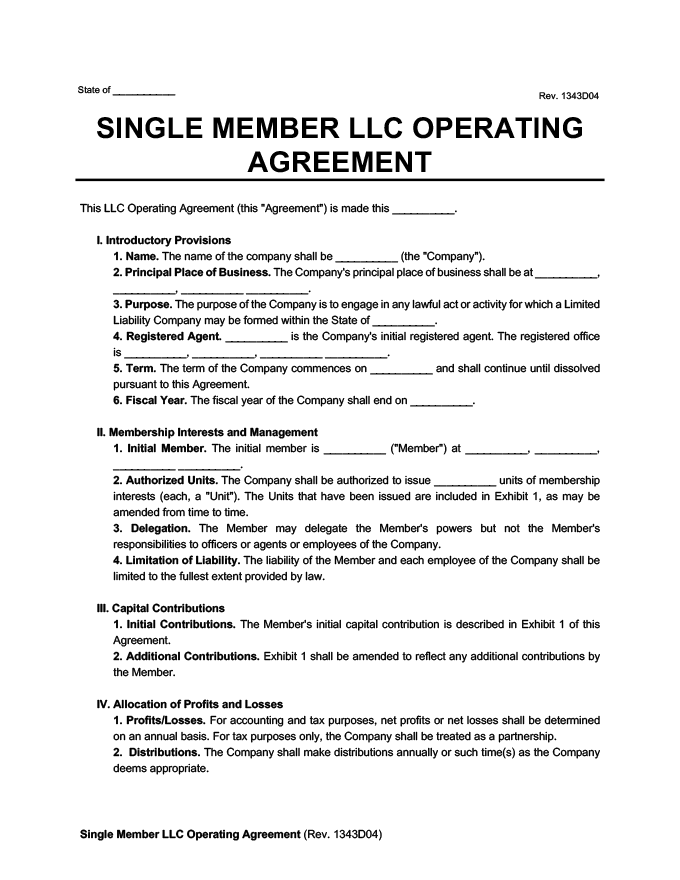What Is a Single-Member LLC?
A single-member limited liability company (LLC) is a business owned and run by one person. Like any LLC, it creates legal separation between the owner and the business. It keeps your personal assets separate from your company. This means your home, car, and savings are protected if the business is unable to pay its debts or is sued.
All states recognize single-member LLCs, but the rules and yearly fees can be different depending on where you register your business. To ensure clear legal protection, most owners create an operating agreement that outlines how their LLC operates.
What Is a Single-Member LLC Operating Agreement?
A single-member LLC operating agreement is a written document that explains how your business is managed. It outlines your company’s purpose, ownership, management, and financial procedures. Even though you’re the only member, having this agreement helps prove that your LLC is a separate legal entity, preserving your limited liability status.
Keep Your Operating Agreement on File
You don’t need to file your LLC operating agreement with the state. Keep a signed copy for your records instead. Some banks, lenders, or courts may request to see it as proof of ownership or to understand the structure of your business.
Does a Single-Member LLC Need an Operating Agreement?
Most states don’t legally require single-member LLCs to have an operating agreement, but creating one is highly recommended. This document helps establish that your LLC is a separate entity from you personally, thereby protecting your personal assets if your business faces any legal or financial difficulties.
Several states require single-member LLCs to have a written operating agreement. For example:
- New York requires all single-member LLCs to adopt a written operating agreement (New York LLC Law § 417).
- Missouri recognizes the operating agreement as the governing document for the company’s internal affairs and management (Missouri Revised Statutes § 347.081).
Even if your state doesn’t require one, writing your operating agreement is still a best practice. It helps protect your limited liability, confirms your ownership, and makes it easier to open bank accounts or handle legal matters.
Why You Need an Operating Agreement (Even as a Sole Owner)
Even if you’re the sole owner of your LLC, creating an operating agreement is one of the best ways to protect yourself and your business.
Avoid Default State Rules
If you don’t have an operating agreement, your business automatically follows your state’s default LLC laws. These laws decide how your company is managed, how profits are divided, and what happens if you close your business.
For example, some states dissolve an LLC if the owner dies or becomes unable to manage it. By writing your own agreement, you can decide how your LLC continues to operate, who can manage it, and how profits are handled.
Strengthen Liability Protection
One of the primary reasons for forming an LLC is limited liability protection, which shields your personal assets, such as your home, car, and savings, from business debts and lawsuits. However, this protection only works if your LLC is treated as a separate legal entity. Without an operating agreement, courts may treat you as a sole proprietorship. They can argue that your business and personal finances are mixed, which may cause you to lose that protection.
Prove Ownership to Banks and Courts
A signed operating agreement serves as proof of ownership. Banks usually require it when you open a business account, and lenders often ask for it before approving financing. It can also be helpful if you ever face a dispute or legal issue. With a written operating agreement, you can easily show that you are the sole member and decision-maker for the LLC.
How to Write an Operating Agreement for a Single-Member LLC?
Follow the steps below to create a professional single-member LLC operating agreement. Legal Templates offers a free step-by-step single-member LLC operating agreement template that helps you customize your agreement to fit your business needs
Step 1 – Add Basic Company Information
Begin your operating agreement by clearly identifying your LLC and outlining its key details. Here’s what you should include:
- The legal name of your LLC and its main business address.
- The state where your LLC was formed and is officially registered.
- The purpose of your business, such as offering professional services, sell products, or manage property.
- The date your LLC officially begins operations.
- The start and end dates of your fiscal year. Most businesses use the calendar year (January 1 to December 31), but you can choose a twelve-month period if it fits your accounting needs.
Step 2 – List Member Information and Management Structure
Under this section, explain who owns and manages your LLC. As a single-member business, this is where you confirm that you’re the sole owner of the company.
Include the following details:
- Member Information: List your full legal name and mailing address as the sole member of the LLC.
- Management Type: State whether your LLC is member-managed (you run daily operations) or manager-managed (someone else manages the business on your behalf). Most single-member LLCs are member-managed.
- Liability Limitations: Include a statement stating that you are not personally liable for the company’s debts or legal obligations. This reinforces your limited liability protection.
- Indemnification Clause: Consider including an indemnification clause that protects you from personal liability for actions taken in good faith while managing the business.
Step 3 – Record Capital Contribution
List clearly what you’ve invested in the LLC within your operating agreement. Recording these contributions clearly separates your personal and business finances. This can include:
- Cash contribution
- Property or equipment
- Other non-cash assets, such as vehicles, tools, or intellectual property
Step 4 – Explain How Profits and Losses Are Handled
Describe how your LLC will record and allocate profits and losses. As the only member, you receive 100 percent of the company’s profits and are responsible for any losses.
Step 5 – Describe How Distributions Work
Explain when and how you’ll take money out of the LLC. Distribution should come only from available profits, not from borrowed funds. Keeping accurate bookkeeping records helps track these payments and maintain your limited liability protection.
Step 6 – Outline Rules for Dissolution
Include a plan for closing the business in your single-member LLC operating agreement. Clearly describe:
- When dissolution might occur (for example, if you decide to retire or sell the business)
- Your state’s filing obligations for dissolving an LLC
- How the remaining assets will be distributed after debts are paid
Step 7 – Include Any Other Terms
You can include additional terms and customize your document to fit your unique business needs. For example, you can include:
- How to amend the agreement in the future
- Policies for handling disputes or recordkeeping
- Indemnification or successor clauses, if not already included
Step 8 – Sign and Date the Agreement
Sign and date your operating agreement to make it official. Since you’re the only member, you can sign it yourself, but it is a good idea to do so in front of a notary public. This provides a time-stamped record and adds credibility if the document is ever reviewed in court. You can also use a free notary acknowledgment form to make your document official. Once you’ve created your operating agreement, make sure your LLC is properly registered with the state. You can follow our guide on how to form an LLC to confirm you’ve completed every step.
How Single-Member LLCs Are Taxed
The IRS automatically treats a single-member LLC as part of your personal taxes. This means you’ll report your business income and expenses on your individual tax return, just like a sole proprietor. If you prefer, you can choose to have your LLC taxed as an S Corporation or C Corporation by submitting a Form 8832 or 2553 to the IRS. Some owners do this to save on self-employment taxes, but it’s completely optional.
Sample Single-Member LLC Operating Agreement
View a sample single-member LLC operating agreement template below to see how to outline your company’s ownership and management structure while staying compliant with state laws. Complete a simple questionnaire and download your customized operating agreement for a single-member LLC in PDF or Word format.







